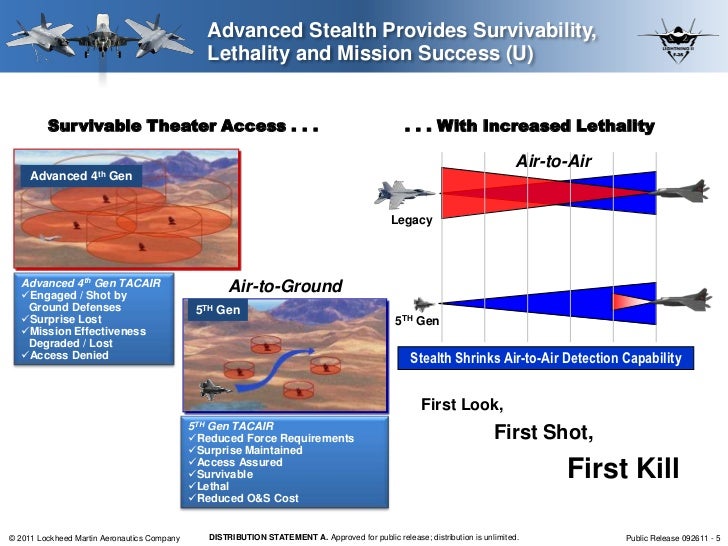Maneuverability of F-35:
https://defence.pk/pdf/threads/impressive-maneuvers-of-f-35-paris-air-show-2017.504581/
Sensor suite of F-35:
https://defence.pk/pdf/threads/unde...on-system-of-f-35-jsf-for-the-dummies.472240/
SU-35 might have superior maneuverability but it can reliably engage F-35 in
close-quarters only, where its IRST and maneuverability will come into play. F-35, on the other hand, will see first (and shoot first)*, thanks to its superior sensor suite and resultant situation awareness**, and low-observable characteristics***. I would rather worry about the fate of SU-35 in this confrontation.
*Overview:-
**Overview:-
***Overview:-
Again, from how far the S-400 system can reliably detect and track F-35, is the question. F-35 would have clear idea of where S-400 is located from afar. And;
A saturation attack of the state-of-the-art terrain-hugging cruise missiles on the FTR of S-400?
F-35 is a potent EW platform as well:
Unlike legacy tactical aircraft that had "federated" electronic-warfare systems, the F-35 architecture is highly integrated. Radio-frequency and electro-optical receivers are embedded around the edge of the airframe to provide continuous sensing of hostile emitters in every direction, with collections from all sensors fused through a central computer before being displayed on the visor of the pilot's helmet. The system also merges information from off-board sensors to provide a comprehensive picture of the local electronic environment.
F-35 is the first fighter that integrates threat data from across the relevant segments of the spectrum before displaying it to the pilot. That reduces the time required to respond to dangers while also easing pressure on the pilot. In fact, if the pilot is preoccupied with other facets of the mission, the EW system will automatically generate the optimum solution to a threat, whether that means jamming a radar, releasing chaff to confuse it, or launching false targets (usually high-tech flares) to draw away heat-seeking missiles.
Onboard EW functions are closely coupled with the F-35's agile radar, which like many other onboard electronic systems is built by Northrop Grumman. The radar is used not only to track and target potential threats, but also to generate jamming signals that overload enemy sensor and communication receivers so that they cannot be used effectively. These software-driven functions must be performed with great precision to generate effects at the exact frequencies where hostile emitters are operating without disrupting signals used by friendly forces.
Because the F-35's EW architecture is fully digitized, it weighs less, needs less space, and requires less power than legacy technology. However, the F-35 provides much greater electrical power for electronic applications than last-generation aircraft, enabling it to collect information and generate effects over larger areas. The radar is designed to generate highly directional signals for jamming so that emitters in specific locations can be disrupted without causing collateral effects elsewhere in the battlespace.
To summarize, the F-35 is essentially self-sufficient in its capacity to detect, localize, prioritize and defeat hostile emitters. It not only doesn't require dedicated support aircraft, but it can act as a jamming aircraft for other planes that are not so well-endowed. Whatever information a particular pilot cannot get from his or her onboard systems can generally be obtained from off-board sources (including other F-35s) via secure data links. This is yet another way in which the Pentagon's biggest program is building the foundation for U.S. global air dominance in the decades ahead.
Source:
https://www.forbes.com/sites/lorent...t-of-the-f-35-fighter-story-you-havent-heard/
Rare admission from Russian sources:
"Koral is a ground-based EW system, and in order to effectively counter surface-to-air missiles, especially the kind of missiles that the S-400 uses – missiles that are specifically designed to withstand enemy electronic countermeasures – you need air-based EW systems," Mikheev told media. "You need the analogues of our Rychag or Khibiny systems, and Turkey has nothing of that kind. Obviously, the US has such systems, but it doesn’t export that kind of equipment even to its NATO allies."
Source:
https://sputniknews.com/middleeast/201512021031139763-turkey-russia-electronic-warfare/
Russians are under no illusion irrespective of whatever propaganda they sell to the public in Syria and otherwise. They know that USAF will clean sweep.
S-400 is a formidable defense system and a stuff of nightmares for pilots in general but USAF have unprecedented resources and Cooperative Engagement Capability on its side.
This isn't to say that Russian assets are easy to overcome, but squadrons of F-35 can/will deliver against such odds. Decent planning and right combination of munitions and tactics needed.










